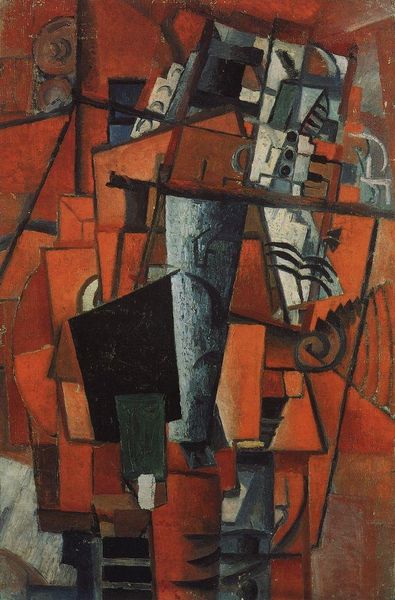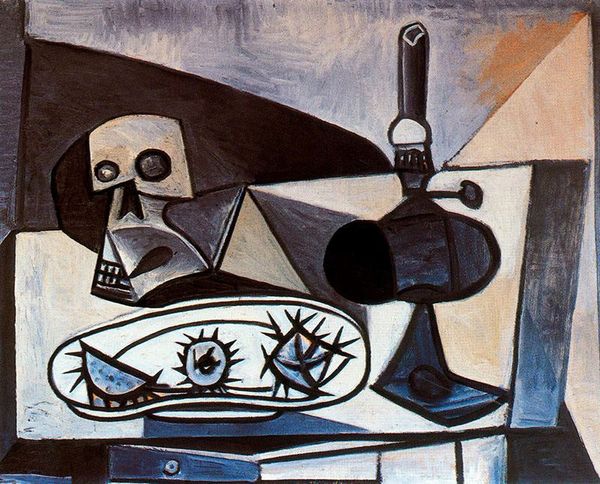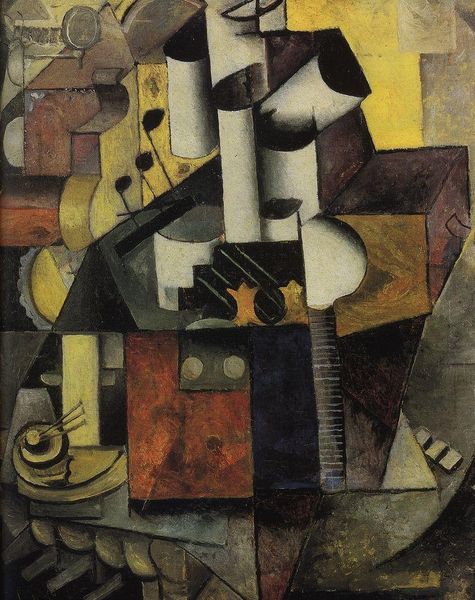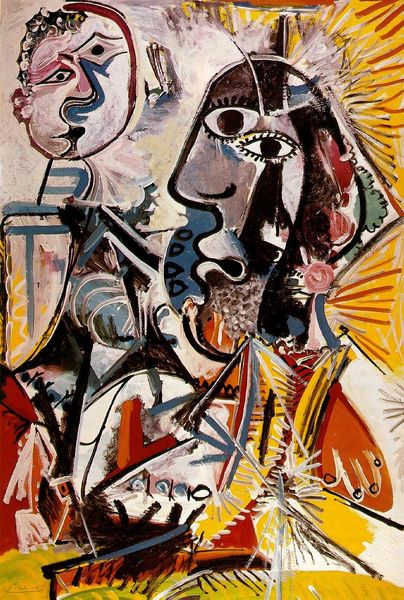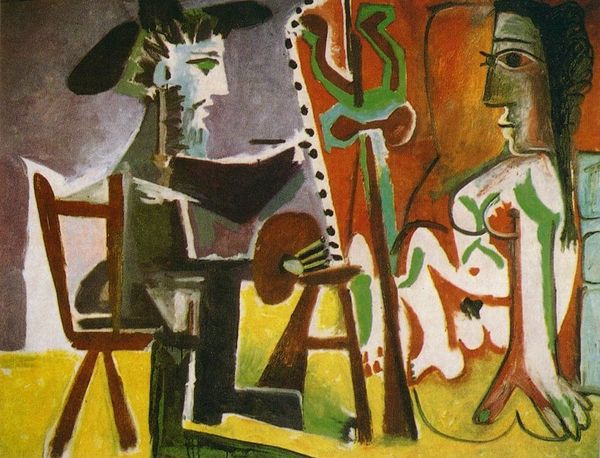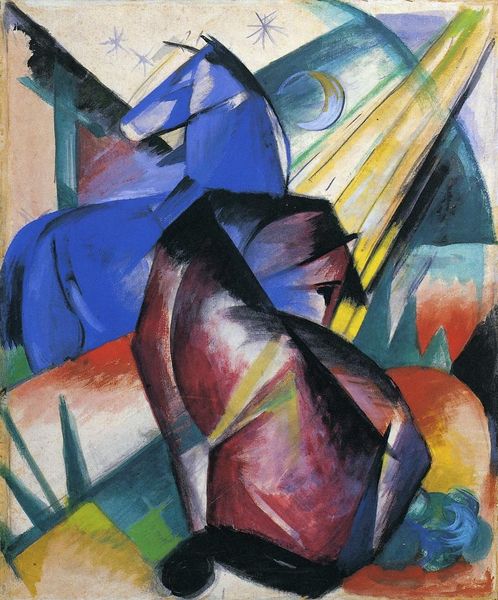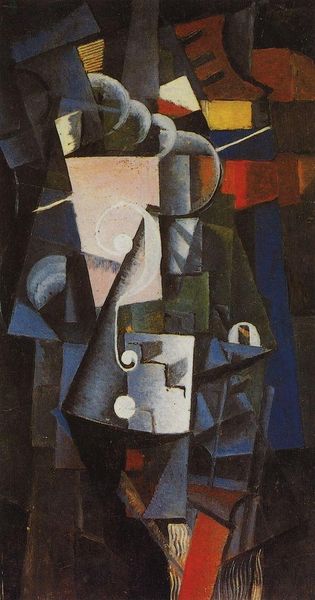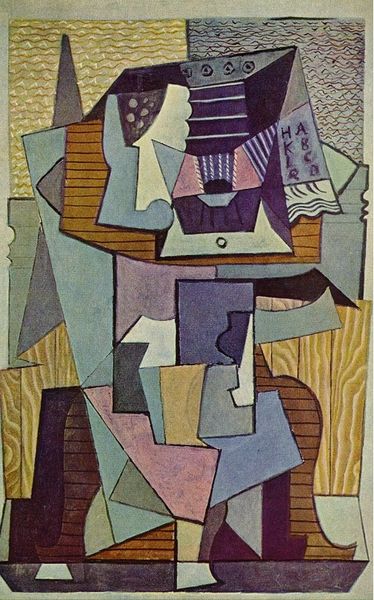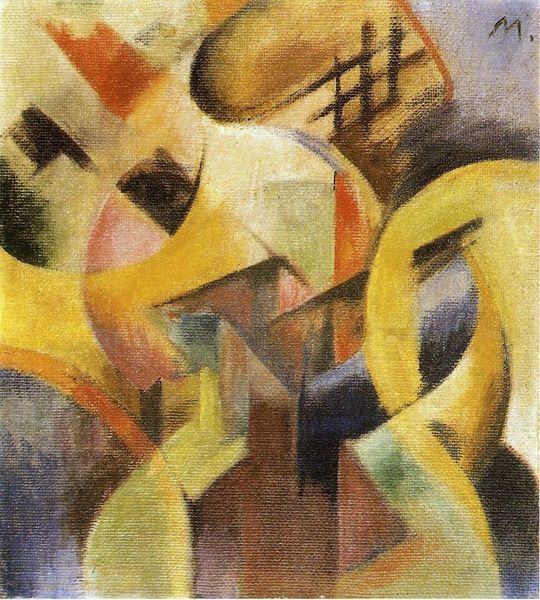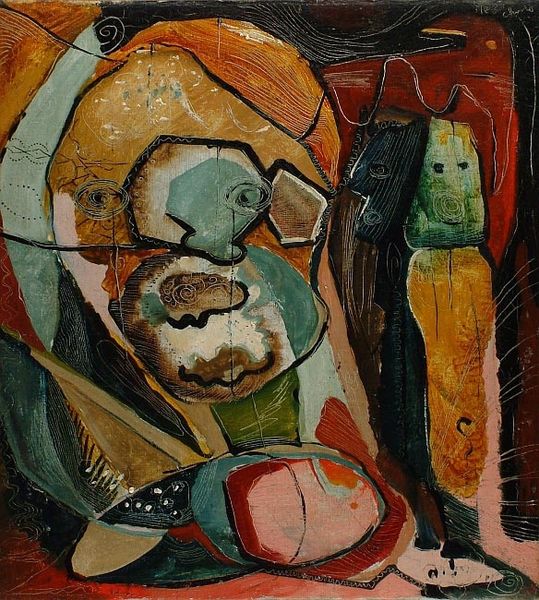
painting, oil-paint
#
cubism
#
fauvism
#
painting
#
oil-paint
#
vanitas
#
expressionism
#
expressionist
Dimensions: 116 x 89 cm
Copyright: Public domain US
Curator: Looking at Picasso's "Composition with Skull" from 1908, the immediate impression is...discordant, yet compelling. What jumps out to you? Editor: Well, that skull obviously draws the eye! It's like a memento mori shouting from the canvas, juxtaposed against the other flattened, geometric shapes. There's a rawness to the brushstrokes, too, almost expressionistic. Curator: It's certainly a bold piece. The influence of Cubism is evident in the fracturing of form, the breaking down of objects into geometric planes. But, yes, as you said, the expressiveness remains dominant and reflects Picasso’s social and political context at that moment of modern art’s expansion. Editor: Exactly! Skulls throughout history have been laden with symbolic weight, signifying mortality, of course, but also rebellion, knowledge, even vanity. This one feels particularly poignant, considering Picasso's later fame, but, back then it speaks a kind of bohemian, existential truth. Curator: Indeed. There is the historical "Vanitas" tradition but more relevant here, at this moment, would be the influence of the Symbolists and Expressionists which had very little public visibility in Paris beyond small magazine reviews or niche exhibitions in private galleries. What’s interesting, too, is the composition – how Picasso uses the objects arranged within a constructed scene that, while hinting at decay, also represents the artist’s own creative power over the medium. Editor: Absolutely. And that interplay—life and death, creation and destruction—it’s powerful stuff. The skull practically leaps out, demanding to be seen within this world of artistic experimentation. The way Picasso uses and reshapes it conveys that potent message across eras and contexts. Curator: It really is a crucial point in understanding Picasso’s creative trajectory. Looking at "Composition with Skull" with its angularity and challenging perspective and raw symbolism you know where art is headed: not just recording the world, but radically reinterpreting it. Editor: Precisely. And seeing those familiar symbols twisted into new shapes makes me reconsider those timeless human concerns about being here today and gone tomorrow.
Comments
No comments
Be the first to comment and join the conversation on the ultimate creative platform.
